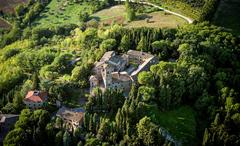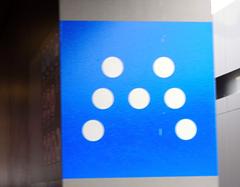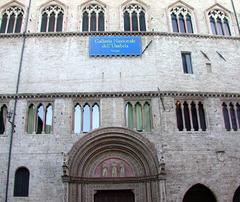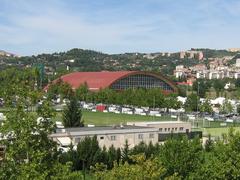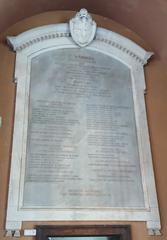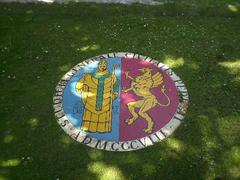Castello di Fontignano: Visiting Hours, Tickets, and Travel Guide – Perugia Historical Sites
Date: 14/06/2025
Introduction
Nestled in the tranquil Umbrian countryside near Perugia, Castello di Fontignano is a captivating destination that fuses medieval history, Renaissance art, and stunning natural scenery. Perched above the southern shores of Lake Trasimeno, this historic castle and its surrounding village offer visitors an immersive journey into the heart of central Italy’s layered past. Most notably, Fontignano is celebrated as the final resting place of the Renaissance master Pietro Vannucci—known as Perugino—whose legacy imbues the local Church of the Annunziata with artistic and cultural significance. Whether you are an art lover, history enthusiast, or a traveler in search of authentic Umbrian experiences, Castello di Fontignano promises an enriching visit off the beaten path (Umbria Tourism; iluoghidelsilenzio.it; Perugia Tourism Website).
Contents
- Introduction
- Historical Background
- Architectural Features and Setting
- Perugino’s Artistic Legacy
- Visitor Information
- Nearby Attractions & Travel Tips
- Preservation and Cultural Importance
- Frequently Asked Questions (FAQ)
- Visuals & Interactive Elements
- Conclusion
- References and Further Resources
Historical Background of Castello di Fontignano
Fontignano’s roots trace back to the Middle Ages, when it emerged as both a rural stronghold and agricultural estate under the feudal system that defined Umbria. The area’s strategic hilltop position made it a focal point in regional conflicts, evidenced by the castle’s defensive architecture and historical records of sieges and reconstructions. In the 15th and 16th centuries, Fontignano gained cultural prominence as the final home of Pietro Perugino, one of the Italian Renaissance’s most influential painters. His presence—and the enduring artworks he left behind—elevated both the village and the castle to sites of cultural pilgrimage (Umbria Tourism).
Architectural Features and Setting
Surviving Structures and Layout
The castle’s remains, though partially ruined, reveal its medieval origins. Notable features include the mastio (main keep), stretches of cinta muraria (defensive walls), and two distinct towers—one quadrangular, the other circular. These structures crown a hilltop, providing panoramic views over Lake Trasimeno and the verdant Umbrian landscape (iluoghidelsilenzio.it; thebinutrek.com).
Defensive and Community Features
- Walls and Towers: Constructed from local limestone and sandstone, the walls are robust and thick, built to withstand medieval sieges.
- Village Core: The fortified enclosure once sheltered not just soldiers but also villagers and a hospitale for travelers and the sick.
- Church of Santa Maria: Elevated to a pievania (principal parish church) by Frederick Barbarossa in 1163, it reflects the site’s religious and social role.
- Integration With Landscape: The castle’s hilltop position and proximity to olive groves and cherry orchards highlight its deep connection to rural life (thebinutrek.com).
Architectural Evolution
Originally a “villa” (village), Fontignano was referred to as a “castrum” (fortified settlement) from the late 14th century onward. The castle endured sieges, including sackings in 1387 and 1388 and occupation by Cesare Borgia’s troops in 1503, each event leaving architectural and historical traces (iluoghidelsilenzio.it).
Perugino’s Artistic Legacy
Fontignano’s true distinction lies in its association with Pietro Vannucci, known as Perugino. In the early 1520s, the Annunziata Confraternity commissioned Perugino to paint frescoes in the Church of the Annunziata (also called Madonna della Grazie). His masterful works here, such as the “Madonna and Child with Saint Michael and Saint Raphael,” exemplify his signature gentle figures, harmonious colors, and serene landscapes. Notably, his “Adoration of the Shepherds” fresco, now at the Victoria and Albert Museum in London, was executed here (Umbria Tourism).
Tragically, Perugino contracted the plague and died in Fontignano in 1523 while working on these frescoes. Initially buried outside the village due to contagion protocols, his remains were rediscovered and reinterred in the church decades later, where his tomb is now a site of quiet homage for art lovers and scholars.
Visitor Information
Opening Hours
- Castle Grounds: Open daily, 9:00 AM–7:00 PM (April–October); 10:00 AM–4:00 PM (November–March).
- Church of the Annunziata: Generally open 9:00 AM–6:00 PM, but hours may vary for religious events—verify in advance (Umbria Tourism; Perugia Tourism Website).
Tickets and Admission
- Entry to the castle ruins and the church is free of charge. Donations for preservation are appreciated.
- Guided tours are available by appointment through local operators or the Perugia tourism office.
Accessibility
- The castle ruins have uneven terrain; wheelchair access is limited.
- The church is generally accessible, though outdoor areas may present challenges. Contact local offices for assistance if needed.
Getting There
- By Car: About 15–20 km southwest of Perugia, reached via the SS75 and local roads.
- Public Transport: Regional buses connect Perugia with Fontignano; final approach may require a moderate uphill walk.
- Parking: Limited spaces near the site.
Nearby Attractions & Travel Tips
- Lake Trasimeno: Just a short drive away, offering boating, birdwatching, and lakeside dining (Go Ask a Local).
- Perugia’s Historic Center: Explore the Etruscan Arch, National Gallery of Umbria, and Piazza IV Novembre (Understanding Italy).
- Other Hill Towns: Castiglione del Lago and Città della Pieve are nearby, each with their own medieval and Renaissance appeal.
Travel tips:
- Best seasons to visit are spring and early autumn for mild weather and fewer crowds.
- Wear comfortable shoes for uneven paths.
- Modest dress is recommended when visiting churches.
Preservation and Cultural Importance
Ongoing conservation efforts by local authorities and cultural organizations aim to protect both the castle’s ruins and Perugino’s precious frescoes. The site’s relative tranquility—far from mass tourism—helps preserve its authentic atmosphere. Visitors are encouraged to act responsibly, support local artisans, and participate in sustainable tourism initiatives (Umbria Tourism).
Frequently Asked Questions (FAQ)
Q: Are there entrance fees to visit Castello di Fontignano or the church?
A: Both are free to enter, though donations are welcome.
Q: What are the visiting hours?
A: Castle: 9:00 AM–7:00 PM (April–October); 10:00 AM–4:00 PM (November–March). Church: typically 9:00 AM–6:00 PM, but check ahead.
Q: How do I get there from Perugia?
A: By car (about 30 minutes); buses are available but may require walking.
Q: Is the site accessible for visitors with disabilities?
A: Accessibility is limited in some areas; contact the local tourism office for tailored advice.
Q: Are guided tours available?
A: Yes, through local operators or by arrangement with the tourism office.
Visuals & Interactive Elements
To enhance your visit, explore online virtual tours and photo galleries hosted on the official Perugia tourism website. Maps and images of the castle, Perugino’s frescoes, and the panoramic views can help you plan your trip. When on site, sunrise and sunset offer exceptional photography opportunities.
Conclusion
Castello di Fontignano is a rare convergence of medieval heritage, Renaissance artistry, and Umbrian natural beauty. From the evocative castle ruins and Perugino’s mature frescoes to the tranquil village atmosphere and breathtaking landscapes, this site offers a memorable journey into Italy’s cultural heartland. Free access, the availability of guided tours, and proximity to other Umbrian gems make it an essential stop for anyone exploring the Perugia region.
For the latest updates on tours, events, and accessibility, consult the official tourism portals and consider using the Audiala app for interactive guides and offline resources. Embrace the opportunity to connect deeply with Umbria’s past—and let Fontignano’s history, art, and scenery inspire your own Italian adventure.
References & External Links
- Umbria Tourism – Visiting Fontignano’s Church of the Annunziata
- Perugia Tourism – Fontignano Information
- Il Luoghi del Silenzio – Castello di Fontignano
- Umbria Tourism – Perugia
- Official Perugia Tourism Website
- PlanetWare – Perugia Attractions
- Go Ask a Local – Perugia Travel Guide
- The Binutrek – Hiking to Fontignano
- Understanding Italy – Perugia
Images and maps recommended for this article should include descriptive alt tags such as “Castello di Fontignano stone walls,” “Perugino fresco in Church of Madonna della Grazie,” and “Map of Perugia historical sites.”
